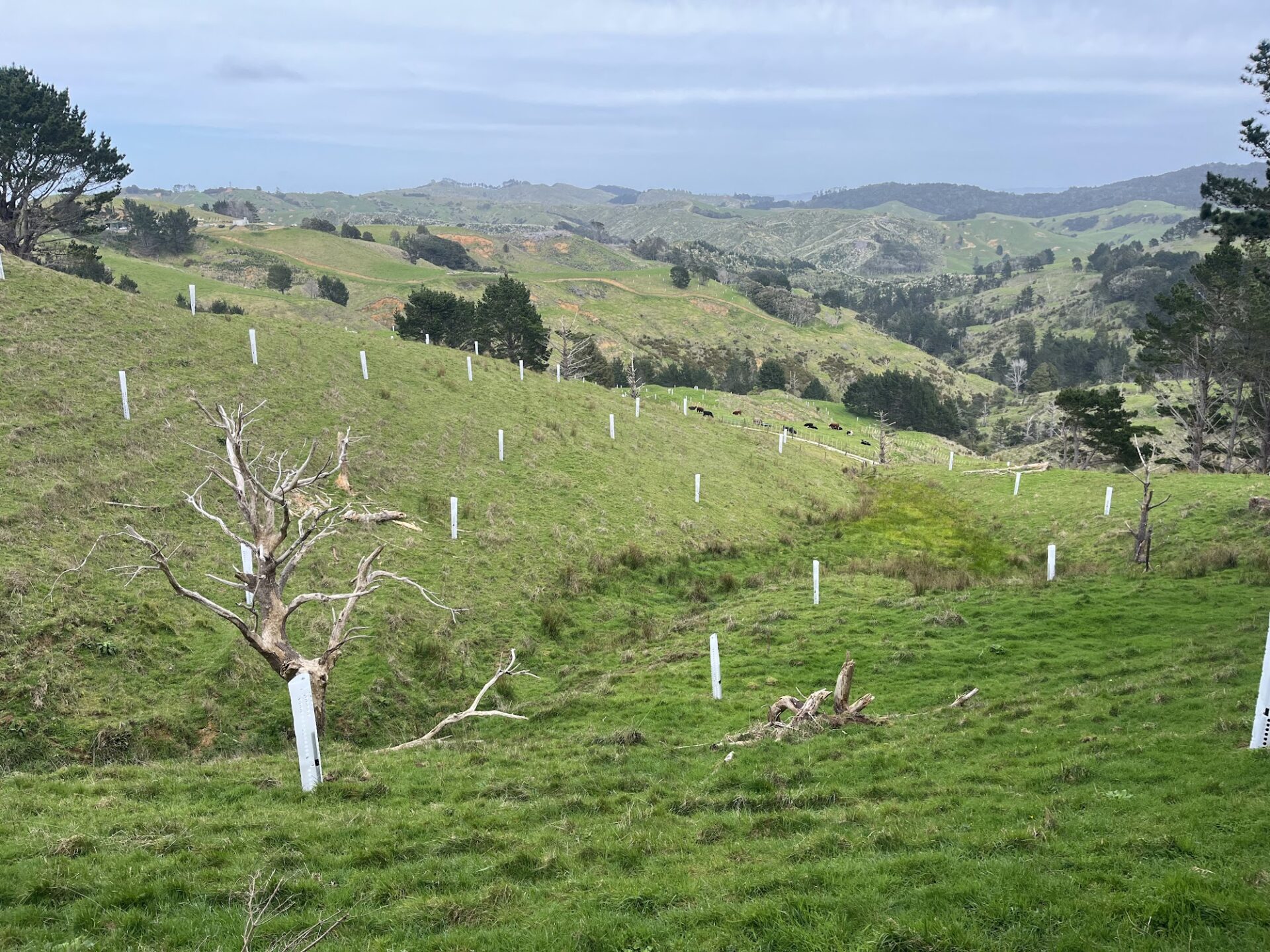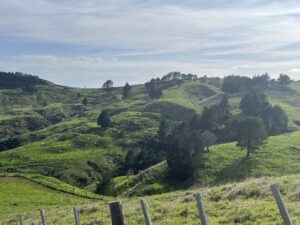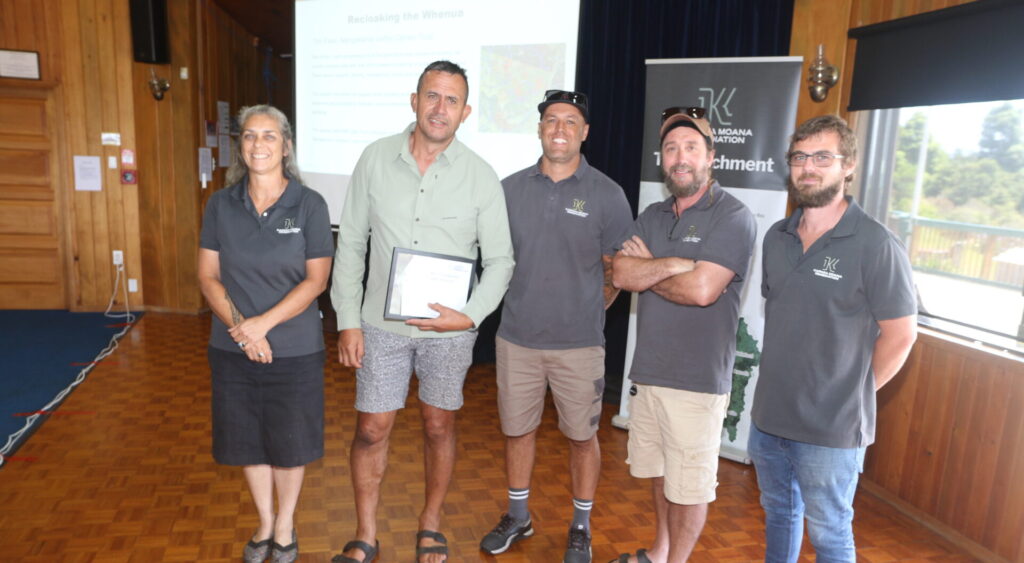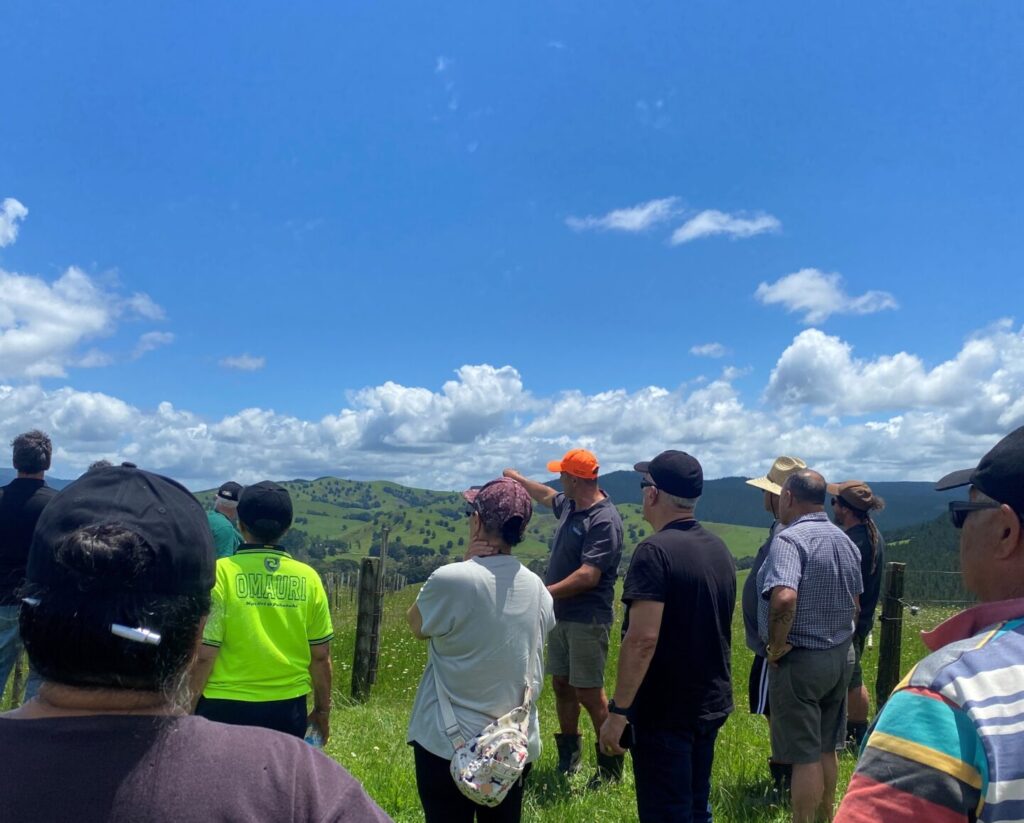

October, 2024
Space-planted tree trial underway
A trial to use space-planted native trees to stabilise moving hillsides while supporting sheep and cattle grazing is underway on two pockets of farmland in Auckland.
Verdantia Research has teamed up with Kaipara Moana Remediation and Auckland Council to understand the performance of a variety of space-planted native trees on grazed pasture on working farms.
The three-year trial is being conducted on a long-established coastal sheep and beef farm near Glorit and on an inland beef unit at Kaipara Hills, both of which were damaged by large slips in early 2023 caused by the Auckland Anniversary and Cyclone Gabrielle rains.
Verdantia co-founders, Dr Tom Mackay-Smith (left) and Dr Raphael Spiekermann, are working on trials to develop a planting model that could be adopted in Auckland and Northland to reduce landslides and minimise erosion using native silvopastoral ‘space-planted’ systems.
“We have planted both poplar wands and three native species – kānuka, pūriri and tōtara at a ~ 13 m spacing on two farms in the region (a total of 300 trees per farm). Over the next three years we will be monitoring the growth and survival rates of the trees,” says Tom.
The trials are being undertaken on both North and South facing hillsides and will be monitored for three years to gain insights for the good of the environment and landowners.
He also hopes Verdantia’s newly designed, robust tree guard will enable native seedlings to become more consistently established in the presence of sheep, cattle, deer and goats.
“For livestock farming in New Zealand hill country, it is challenging to find the balance between optimum productivity and the costs of environmental action.
“We believe a potential solution could be found through native silvopastoral systems, where individual native trees are grown in paddocks at wide spacings of 12-20 metres.”
Providing shade and wind protection for stock is also beneficial to improved animal health, and many native trees should grow for at least 150 years, providing long-term benefits.
KMR Pou Tātaki Justine Daw says her team is specifically interested in developing native silvopasture practices that reduce the incidence of landslides, reducing large-scale soil erosion and sediment delivery into waterways.
“It’s in everyone’s interest to keep New Zealand’s valuable soils where they belong – on the land.”
 “We are really excited about this trial and look forward to the results as we continue to invest in projects to restore wetlands, fence off rivers and streams, plant trees and regenerate forest on erosion-prone land,” says Justine.
“We are really excited about this trial and look forward to the results as we continue to invest in projects to restore wetlands, fence off rivers and streams, plant trees and regenerate forest on erosion-prone land,” says Justine.
“These actions all help to protect and restore the Kaipara Moana while helping farmers to meet expected future environmental standards and potentially also helping landowners to diversify on-farm income, while also increasing resilience to storms and other extreme weather. Our partnership with Verdantia and Auckland Council for this trial may well provide another solution in reducing sedimentation and siltation in the Kaipara Moana.”
Peter Nowell, Senior Healthy Water Specialist at Auckland Council says the partnership with KMR and Verdantia provides an opportunity to do something different.
“The standard soil conservation approach in New Zealand was developed in the 1960s, so this trial is a chance to compare indigenous species with poplars for space planted soil conservation purposes,” says Peter.
“Farmers trust and learn from other farmers, so having something like this to look at might expand the options for good farming practice in future. From an Auckland Council perspective, it is about having more tools in the toolbox when trying to manage sediment and erosion issues. Hopefully, we can take the learnings from these trials and apply them across the Auckland region in years to come.
“Working with KMR to invest in a potential native intervention that can reduce erosion and improve water quality while keeping costs down is gold.
“I would encourage people to talk to their neighbours about their experience with KMR because they will find it is a positive experience. If the KMR approach is of interest to you, then reach out and get planting next winter,” says Peter.
To get planting, email hono@kmr.org.nz.
Latest News


Latest News and Events
Field Advisors recognised for environment impact
